History of the Department
1905
A chemical engineering curriculum first appears in the UT catalog. The curriculum is a mixture of mechanical engineering and industrial chemistry courses.
1932
Harry A. Curtis, the chief chemical engineer at the Tennessee Valley Authority (TVA), impresses upon UT President James B. Hoskins the importance of establishing a chemical engineering program at UT, reportedly saying, “Mr. President, you offer a chemical engineering program, but I would not hire any of its graduates.” Hoskins and Curtis agree that TVA will pay half the salary of a chemical engineering professor at UT who will work part-time for the agency.

Field shows results of TVA fertilizer
1935
Graduate work in chemical engineering is initiated, leading to the degree of Master of Science. Research in support of the TVA fertilizer development program is funded by TVA and facilitated by a well-equipped machine shop supervised by E.H. Honeycutt (known as “Chief”) with salary initially partially supported by TVA.
1936
The UT Board of Trustees approves the establishment of the Department of Chemical Engineering (ChE) at UT within the College of Engineering, initially housed in Estabrook Hall.
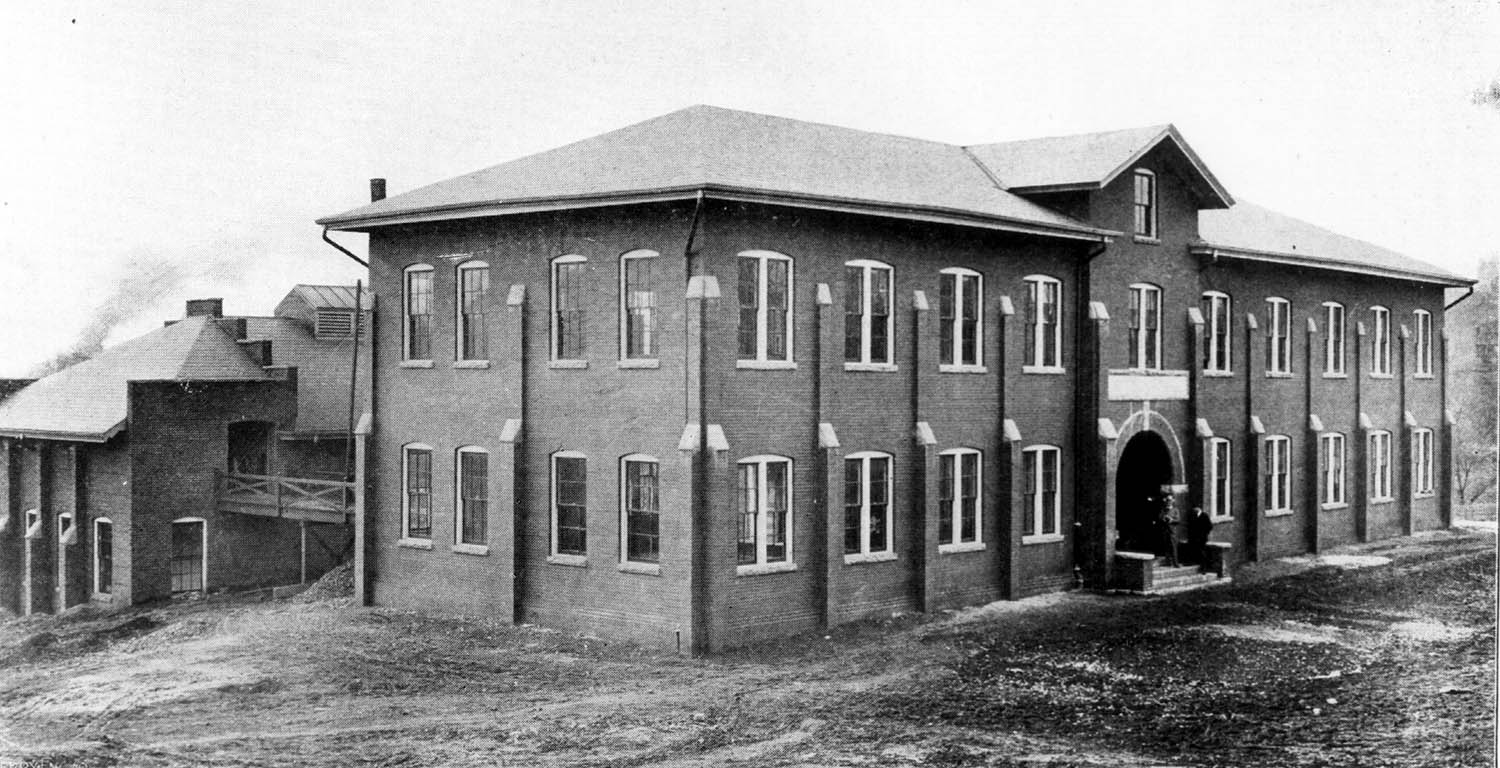
Estabrook Hall
1939
The first group of chemical engineering students graduate. The chemical engineering program is accredited by the Engineers’ Council for Professional Development (ECPD) and the American Institute of Chemical Engineers (AIChE), making it one of the first four chemical engineering programs in the South to receive accreditation; the other three are Georgia Tech, Louisiana State University, and Virginia Polytechnic Institute.
1946
Chemical engineering research at UT expands rapidly after World War II with the opening of the Atomic Energy Commission facilities at Oak Ridge to peacetime use. New, research-oriented faculty are hired, including H.J. Garber, H.F. Johnson, S.J. Jury, and F.N. Peebles in chemical engineering and E.E. Stansbury and W.O. Harms in metallurgy.
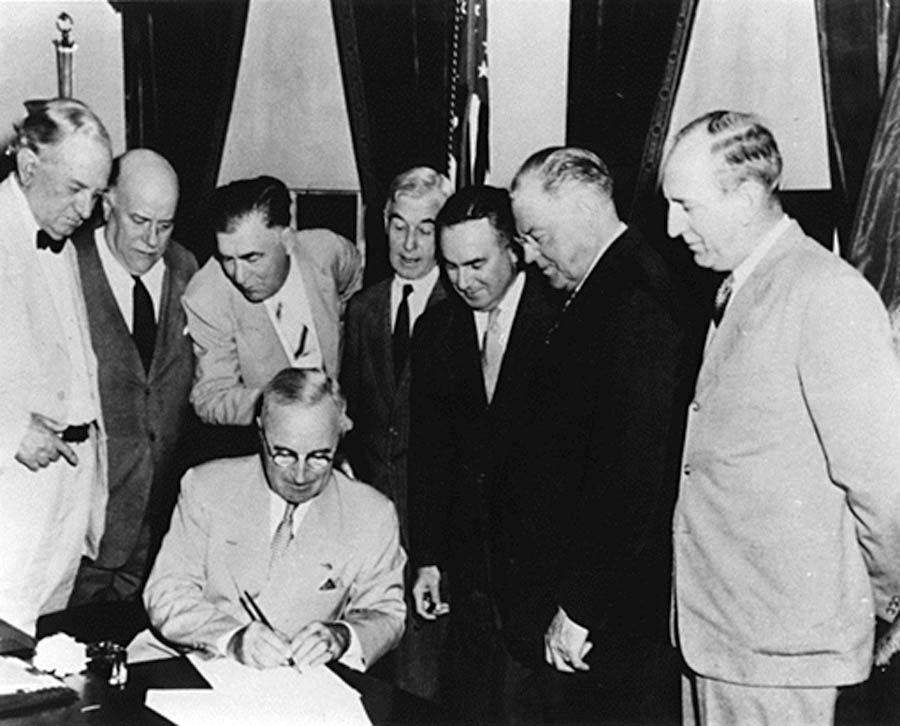
President Harry S. Truman signs the Atomic Energy Act of 1946 establishing the US Atomic Energy Commission.
1947
Metallurgy becomes an option in the chemical engineering program. Options are also offered in microbiology and nuclear processes.
1952
The UT Board of Trustees approves PhD programs in chemical engineering and in metallurgy — the first engineering doctoral programs in Tennessee. The first chemical engineering PhD graduate, Frank Chance, spent his professional career with Pfizer.
1956
The department’s name is changed to the Department of Chemical and Metallurgical Engineering, offering separate degree programs in chemical engineering and metallurgical engineering. The microbiology option previously had been discontinued because the key faculty member, jointly appointed in chemical engineering and microbiology, had taken an industrial position.
1957
Chemical engineering work in nuclear processes is transferred to a new Department of Nuclear Engineering.
1960
The department obtains a sophisticated electronic analog computer through an industrial grant, providing support for instruction and research. Research in the area of process dynamics and control is initiated by John W. Prados with support from ORNL and later expanded by Charles F. Moore, who joins the department in 1969 when Prados leaves to accept an administrative appointment.
Following Boarts’ sudden death, Homer F. Johnson is named department head. During his 24-year tenure, chemical engineering grows from six professors to one of the larger departments in the engineering college.
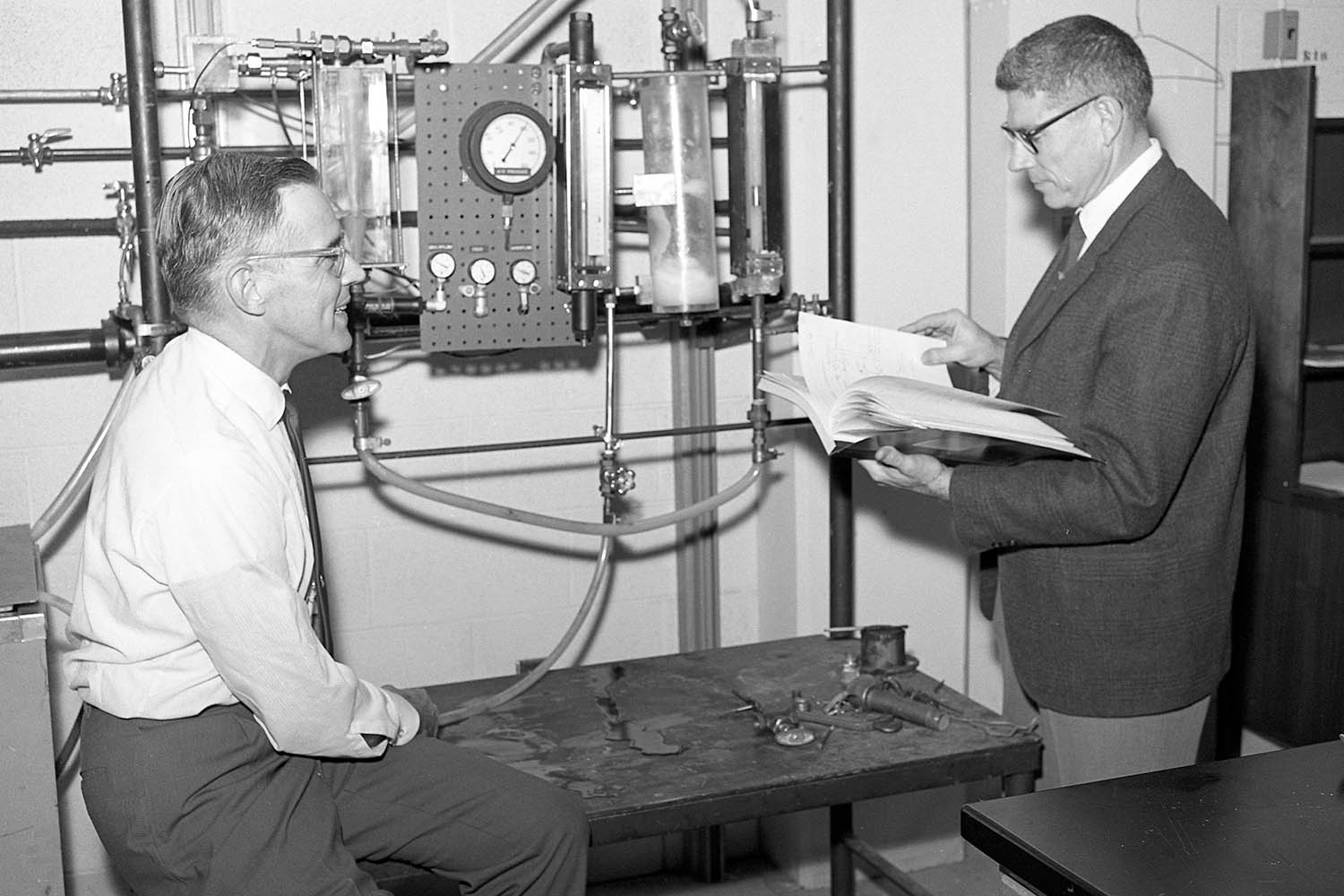
Homer Johnson, left
1964
The department moves into new space in the Dougherty Engineering Building.
1976
Masters and doctoral programs in polymer engineering are added in the department, led by James L. White in cooperation with professors Don Bogue, E.S. Clark, and J.F. Fellers. The department’s name is changed to the Department of Chemical, Metallurgical and Polymer Engineering.
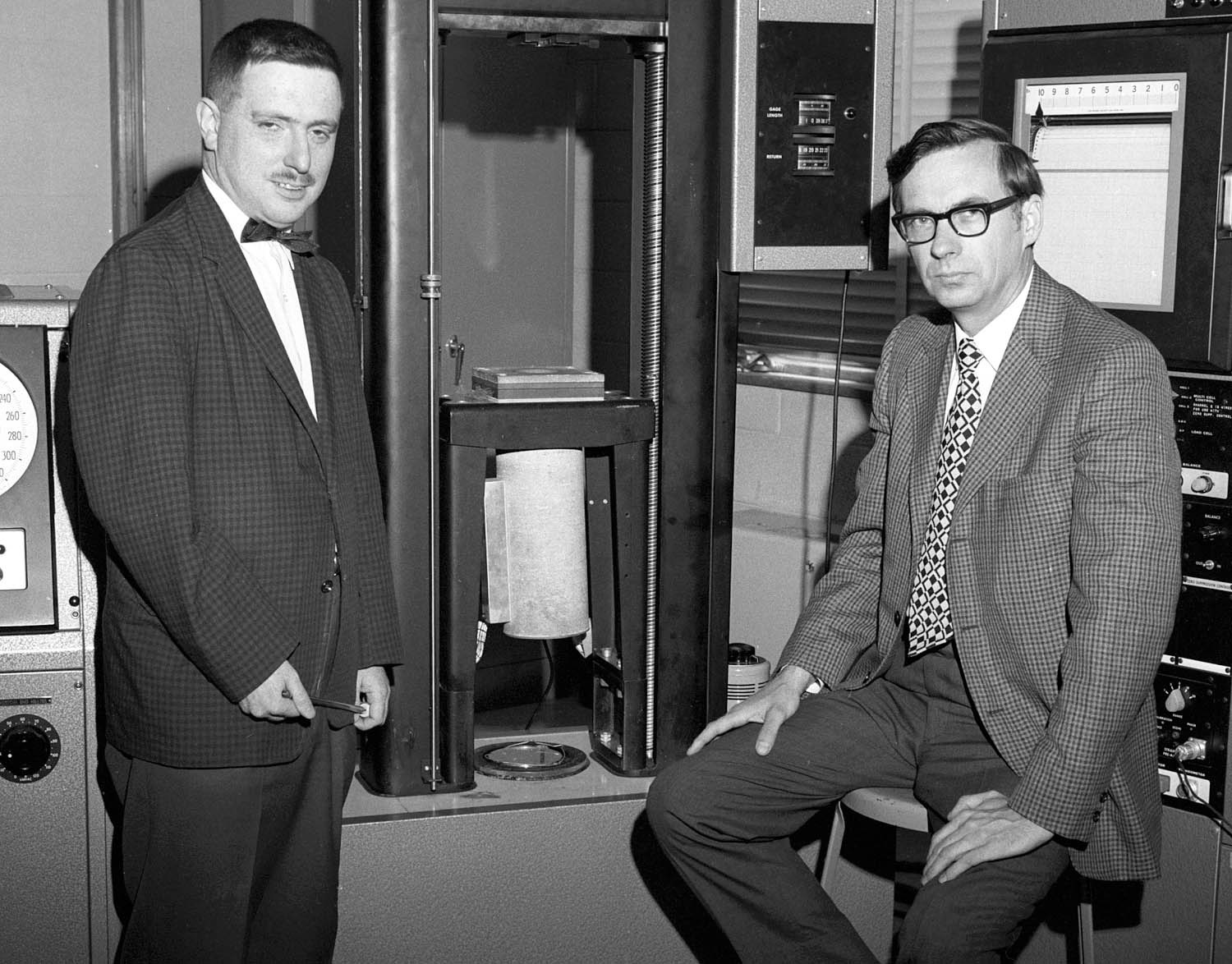
Chemical engineering professors James White, left, and Don Bogue.
1980
Charles Moore develops a relationship with Eastman Chemical that leads to a senior process control internship that is still continuing today.
1984
Johnson retires and the department is split, with poly and metallurgical engineering now offered in the new Department of Materials Science and Engineering (MSE). Joseph J. Perona is named head of the Department of Chemical Engineering, and Joseph E. Spruiell, educated as a metallurgist but contributing to the polymer engineering program, is named head of MSE.
1990
John Prados succeeds Perona as Department Head of Chemical Engineering.
1991
With support from DuPont, Robert M. Counce and Professor Emeritus John M. Holmes establish a capstone design internship program focused on pollution prevention. The program continues to the present with support from the DuPont, Dow Chemical, Eastman Chemical, and Oak Ridge National Laboratory (ORNL).
1992
Mike Harris, a research engineer at ORNL, is the first African American to receive a PhD in chemical engineering at UT.
1993
Prados returns to full-time faculty service and is succeeded by Charles Moore as department head.
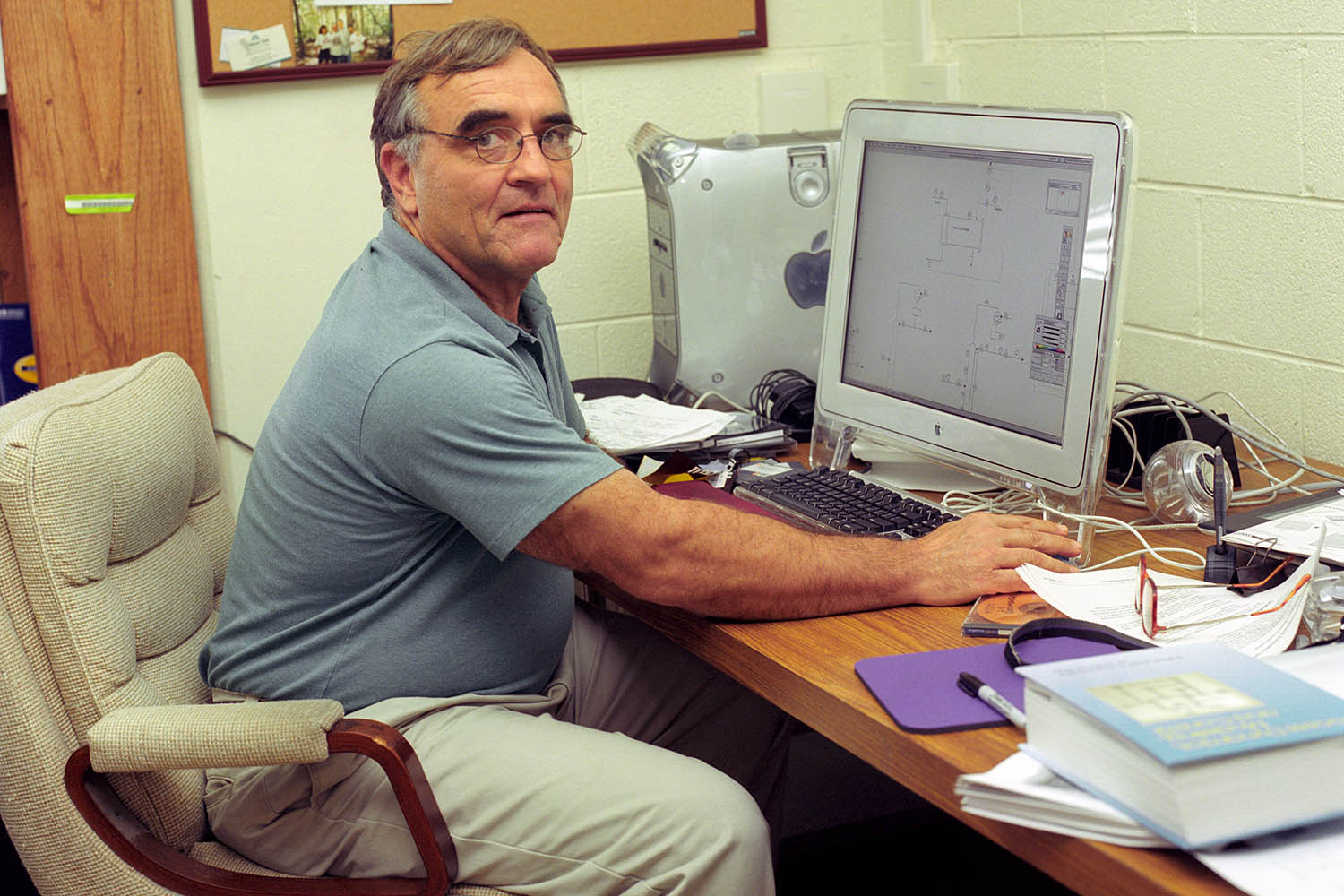
Charles Moore
1997
The Science and Engineering Research Facility is dedicated; several ChE faculty members move in to new lab spaces.
1998
Moore returns to full-time faculty service and is replaced by John R. Collier from Louisiana State University, the first chemical engineering department head who had not previously served as a UT faculty member.
2006
Collier accepts a position at Florida State University and is replaced as department head by Bamin Khomami from Washington University at St. Louis. Khomami is also named the Armour T. Granger and Alvin and Sally Beaman Distinguished University Professor.
2007
The chemical engineering academic unit is renamed the Department of Chemical and Biomolecular Engineering (CBE) to reflect changes in the department’s academic and research missions.
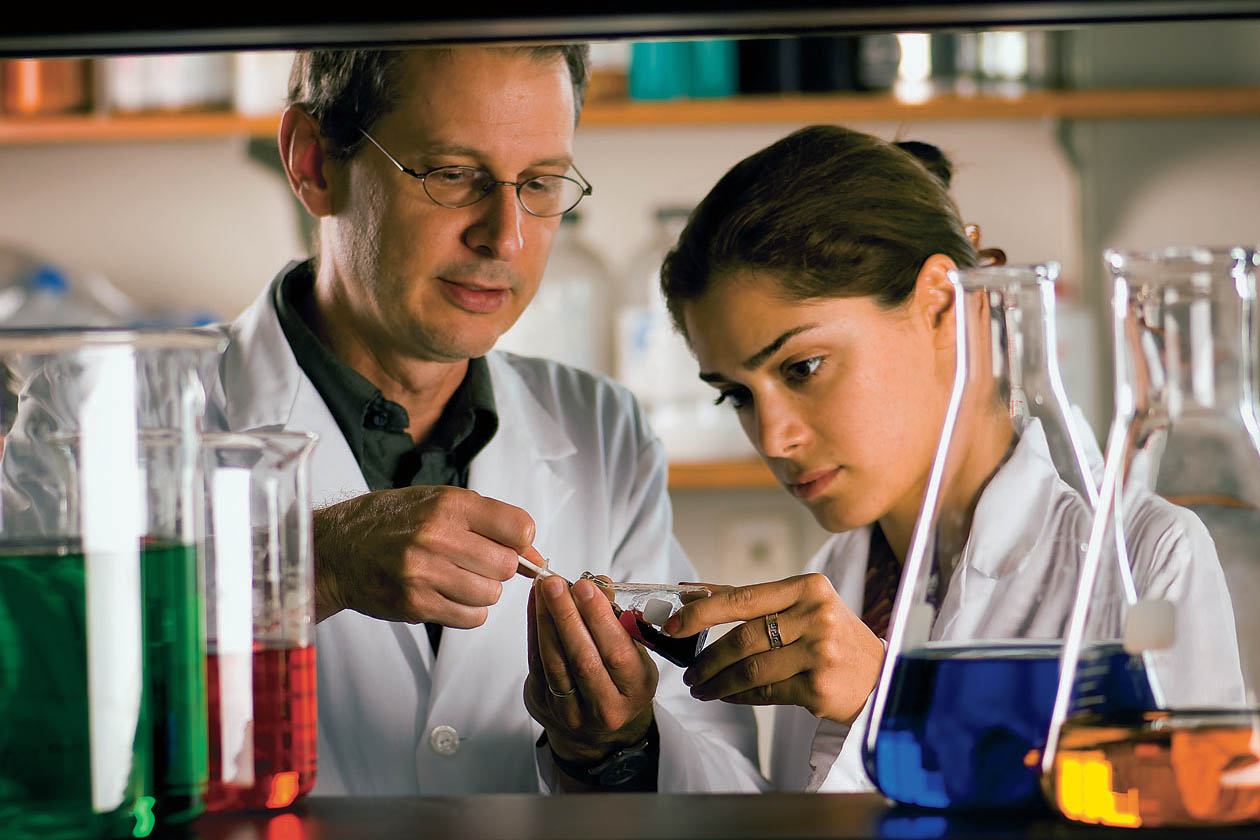
Professor Paul Frymier instructs a student in a laboratory.
2008
CBE establishes the Sustainable Technology through Advanced Interdisciplinary Research (STAIR) program, funded through a grant from the National Science Foundation.
2009
Thomas Zawodzinski, an internationally recognized leader in the field of fuel cells, joins the department as its first UT-ORNL Governor’s Chair in Electrical Energy Storage.
2010
John Prados is honored with the college’s Nathan W. Dougherty award and a professorship is established in his name.
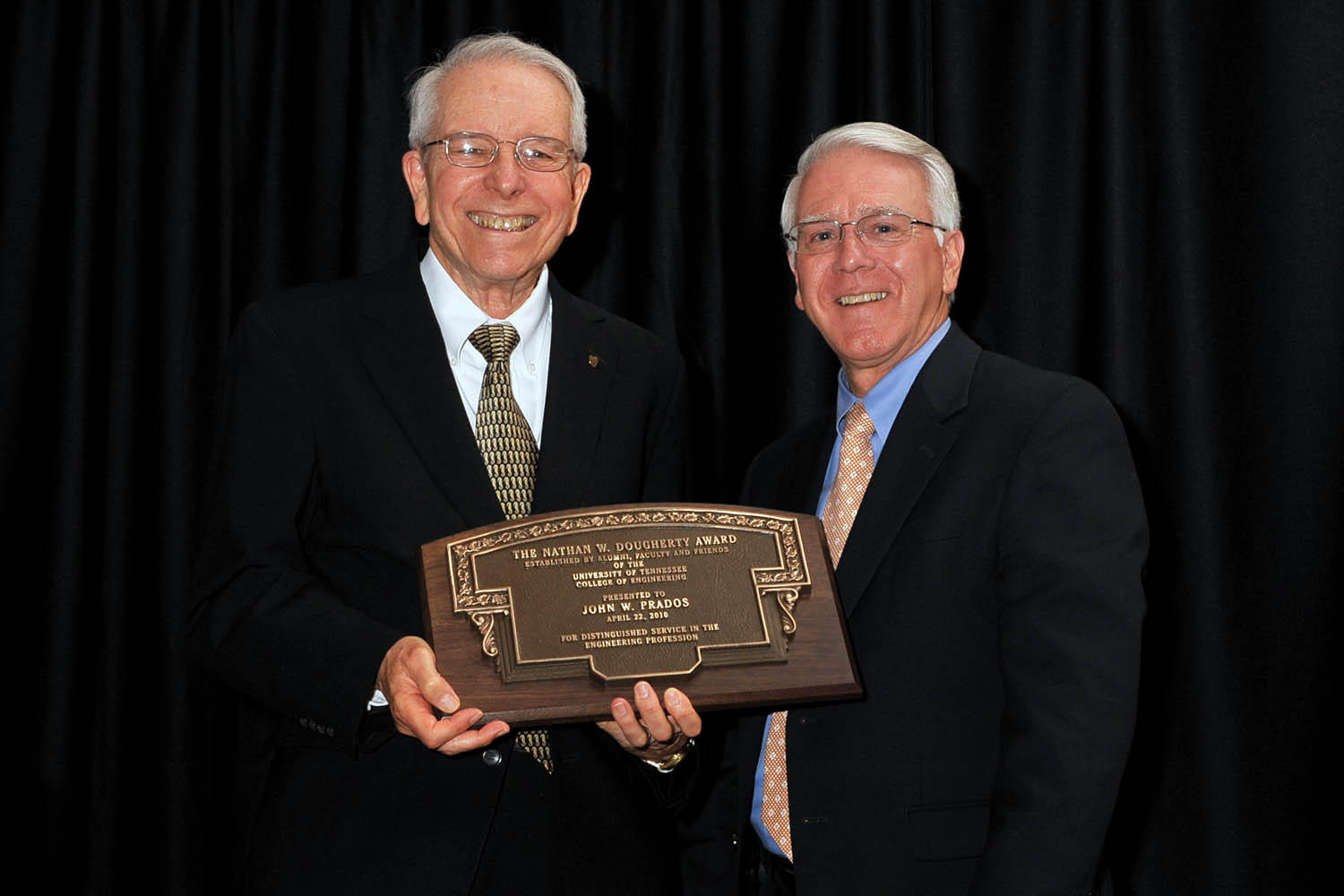
John Prados, left, accepts the Dougherty Award from Dean Wayne Davis.
A team of college faculty and administrators, including nuclear engineering professor Wes Hines, CBE department head Bamin Khomami, and MABE department head Bill Hamel are awarded a $1.8 million grant from the National Science Foundation to fund the construction of state-of-the-art research labs in the Dougherty Engineering Building.
2011
The department celebrates its 75th anniversary.